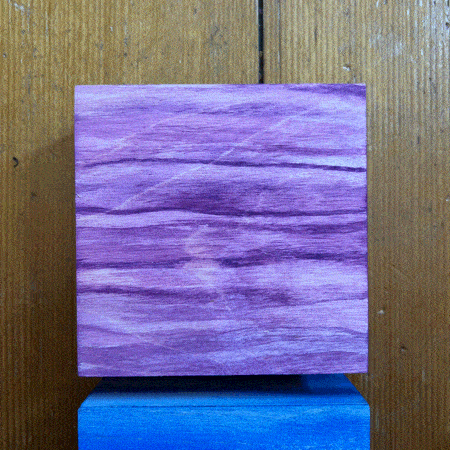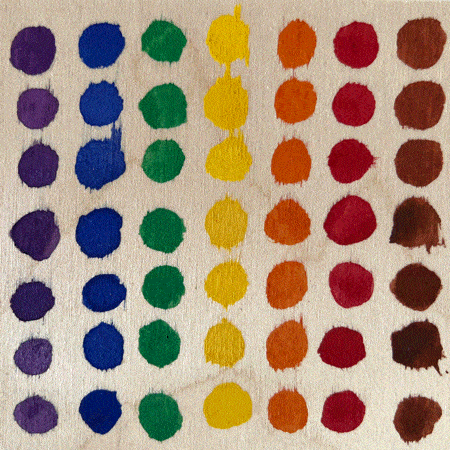Counting the Omer, Part Two
To play is to pray
For more context, check out Counting the Omer, Part One. For more art, check out Omer 2021/5781 Animations.
✨
Three nights ago I completed a 49-day sprint of Counting the Omer: ritualistically counting the days between the traditional barley harvest at Passover to the wheat harvest at Shavuot. Marking the progression from physical freedom to spiritual revelation.
Here’s what I have to show for it:
Eight 4x4 inch wooden canvases, seven in monochrome and one with 49 circles and seven stripes, one per week.
The result is an accidental totally custom Omer kit. Like when I first did a painting a day seven days a week for seven weeks, I kept all my materials in a shallow box for easy access, perched in the corner of the mess of an art table that I share with my kids.
This kit contained the canvases and watercolors for painting as well as the materials I needed for nightly Omer-counting: a string of beads for chanting the sephirot, an illustration of the Tree of Life, and a print-out with text for reciting the Omer:
And so I counted every night, without missing a single one. Before bed I would disappear to that art table, read the Hebrew prayers, announce the number of the day, and chant the name of that night’s sephirot 112 times. Every week I painted, though I did miss a couple of those and double up. And now here I am on the other side. Did anything change?
There is custom of capping off the 49 nights of counting by staying up all night on the 50th to study Torah: Tikkun Leil Shavuot. This year, with the Omer starting and ending on a Saturday night, I celebrated the end just like the beginning: at a wedding. It was also my older kid’s birthday, my sixth anniversary of becoming a parent. I did stay up practically all night, and I danced my face off. That’s a form of Torah study, right? Certainly another avenue for divine revelation.
Between the last first quarter moon and this one, something sort of magical happened. In my last message I mentioned that I had just received the book Counting the Omer by Rabbi Min Kantrowitz. On the very first page she says that rabbi is actually her third career, once she stopped resisting what she called a persistent “tap on the shoulder.” She also says that she lives in New Mexico, where I happened to be traveling the following week for work.
So I looked her up and reached out. And within a week of beginning her book, I was visiting Rabbi Min in person.
If I am leaving this Omer with any divine revelation, it might be one piece of her advice. Rabbi Min often talks to people who might otherwise be interested in becoming a rabbi but are put off by the title and all of its baggage. Myself included. She told me what she has told many others: if you become a rabbi, then who you are becomes what it means to be a rabbi. The rabbinate expands to include you.
So if I got ordained as my queer, intermarried, non-monogamous, tarot-reading, bacon-eating, non-circumsizing, Jewitch, artist self, then that would also be what a rabbi looks like.
I don’t know yet how exactly I will listen to my own persistent tap on the shoulder. Maybe in some ways I already am, and formal schooling and the titles that go with it don’t need to be part of my particular path. But at the end of this Omer, at the beginning of Pride Month, on what would have been Prince’s 64th birthday, I guess I feel more at ease with being myself no matter the outcome. To play is pray.





